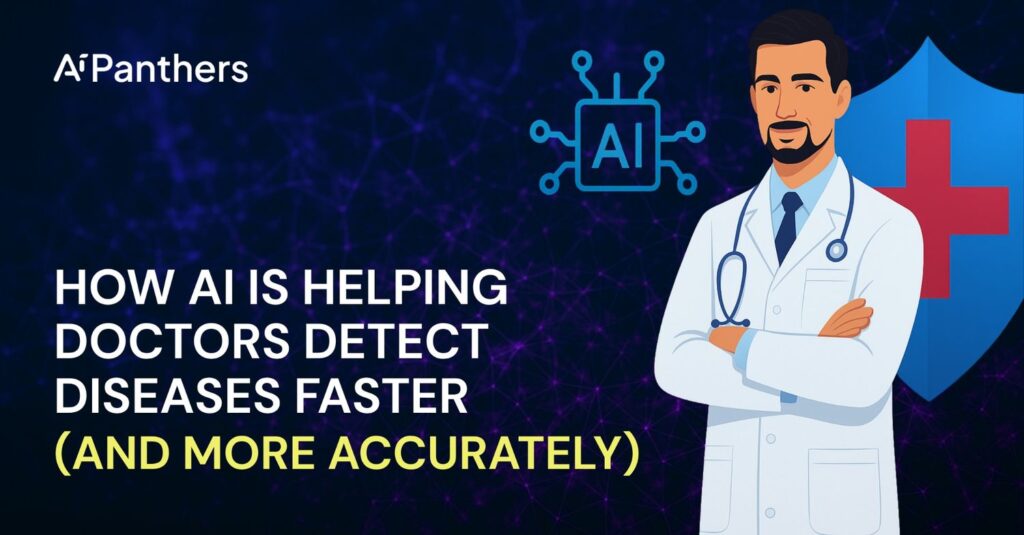
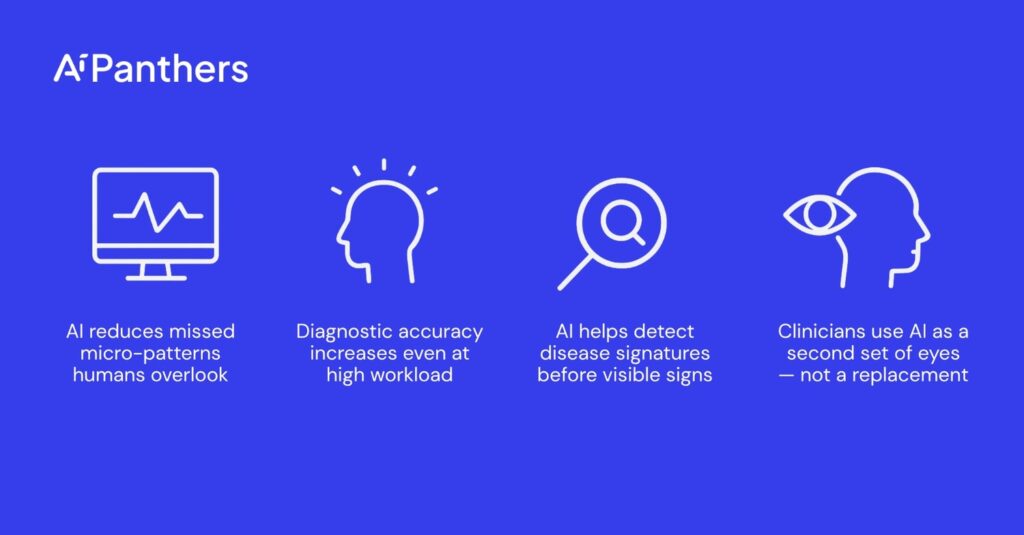
For decades, medical diagnostics has relied on the sharp eyes and clinical instincts of doctors. A radiologist reading hundreds of scans a day. A pathologist spotting abnormal cells under a microscope. A cardiologist studying ECG patterns for subtle irregularities.
But even the most skilled specialists face limits. Fatigue. High workloads. Human bias. Sometimes, critical details slip through — not because of incompetence, but because the human brain can’t process thousands of data points at once.
That’s where AI diagnostics for healthcare comes in. Artificial intelligence is giving doctors a new set of eyes — ones that don’t tire, don’t blink, and can recognize patterns invisible to us.
At AI Panthers, we’ve seen firsthand how AI-powered diagnostic tools are changing the way healthcare teams detect diseases, make decisions, and ultimately, improve patient outcomes.
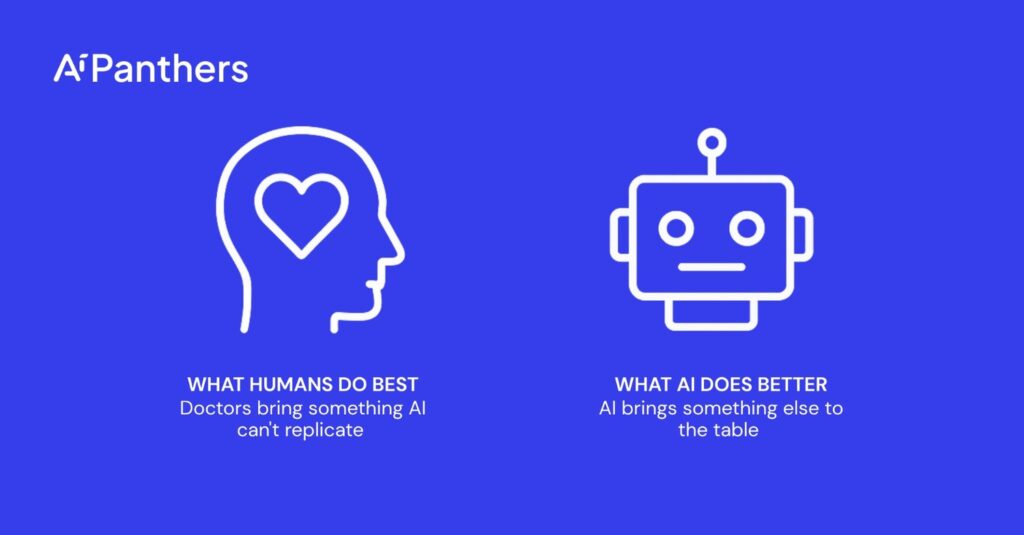
Whenever AI enters a discussion about medicine, the question quickly comes up: Who’s better — doctors or machines?
The truth is, it’s not a contest. It’s a collaboration.
Doctors bring something AI can’t replicate — empathy, intuition, and the ability to read between the lines. A patient’s medical condition isn’t just about lab results or images; it’s about their history, habits, and emotions. Human doctors understand that nuance.
AI brings something else to the table — speed and scale. With deep learning models trained on millions of cases, AI can analyze scans, lab reports, and patterns far faster than humans.
For example, AI medical imaging systems can detect early signs of lung cancer, retinal disease, or cardiac issues in seconds — often catching what even experienced specialists might miss.
In a 2023 Nature Medicine study, AI outperformed radiologists in identifying breast cancer on mammograms, improving accuracy by up to 11%. The takeaway wasn’t that machines are replacing doctors — it’s that together, they’re stronger.
In the past, it was customary for accessible capital to decide between timely technology and fine-tuning. Currently, this determination is based on the use event, the performance of the project, and the long-term aspirations of the democratized AI Framework.
Companies are moving toward fine-tuning their mission-critical objectives, like fraud detection or clinical assessment, because of their precision and reliability. Nevertheless, satisfied sellers, buyer interaction bots, and low-risk original equipment still rely heavily on prompt technology for speed and resilience.
Importantly, new hybrid techniques are becoming more widespread. The model can be quickly adjusted slightly using sophisticated prompting techniques. The Adapter layer and modular training enable selective fine-tuning — learn a new valid terminology free from touching one’s core logic competence. The combination mentioned above has proven to be a powerful, cost-effective solution.
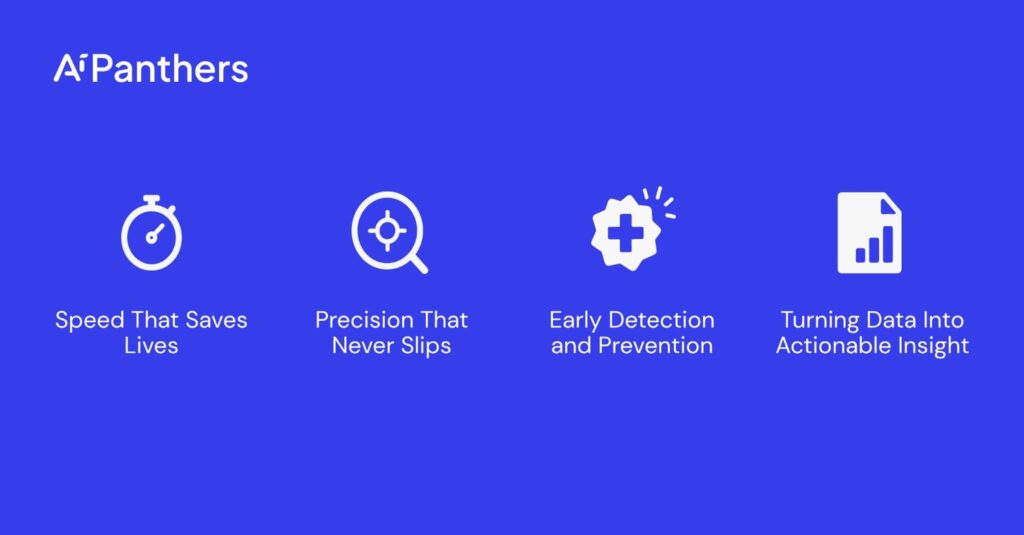
The biggest reason hospitals are turning to AI diagnostics isn’t the tech itself — it’s the impact on patients. Here’s how AI is changing the way care is delivered:
When you’re dealing with conditions like stroke or sepsis, every minute matters, AI systems can scan images and lab results in seconds, flagging urgent cases before a human would even reach the file.
We’ve worked with diagnostic platforms that reduced scan review times by 40% in an emergency room, which can literally mean the difference between life and death.
Humans can miss subtle anomalies — not because they aren’t skilled, but because our eyes weren’t built to spot one pixel out of place. AI systems, on the other hand, thrive on precision.
These diagnostic automation tools maintain accuracy 24/7. They don’t get tired during night shifts or distracted by workload pressure. For hospitals, that means more consistent and reliable results.
AI’s real power lies in early detection. By catching diseases before symptoms fully develop, AI gives doctors a head start. Whether it’s a small shadow in a lung X-ray or minor changes in retinal scans, AI spots trouble earlier — and that leads to better outcomes and lower treatment costs.
AI isn’t just identifying diseases — it’s helping doctors make smarter decisions. By integrating AI with electronic health records (EHRs), hospitals get a 360-degree view of patient data. Patterns emerge—risk factors surface. Care becomes proactive rather than reactive.
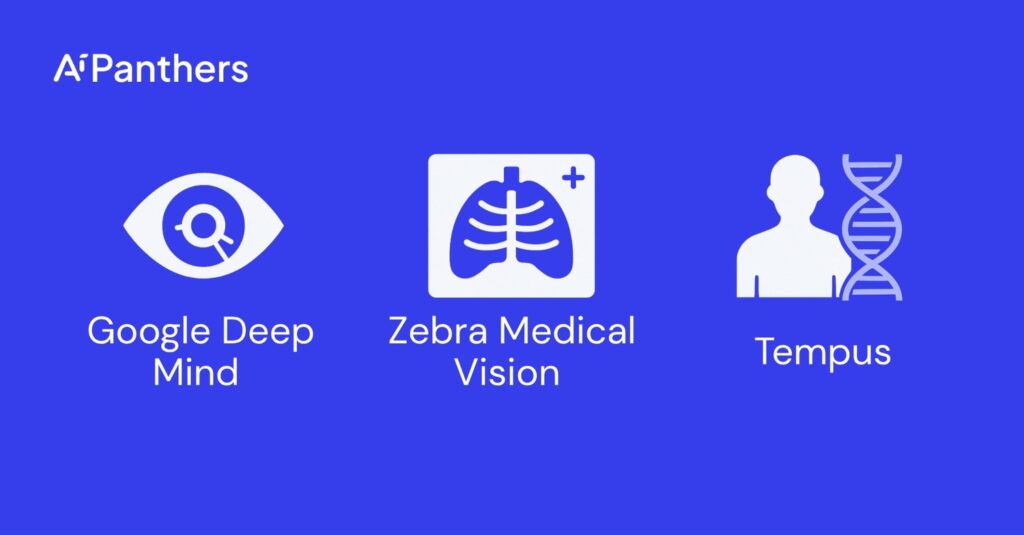
AI is already proving its worth in real hospitals and research centers worldwide.
Each of these examples shows one thing clearly — AI is not replacing radiologists or pathologists. It’s empowering them with deeper insight and freeing their time for what matters most: treating patients.
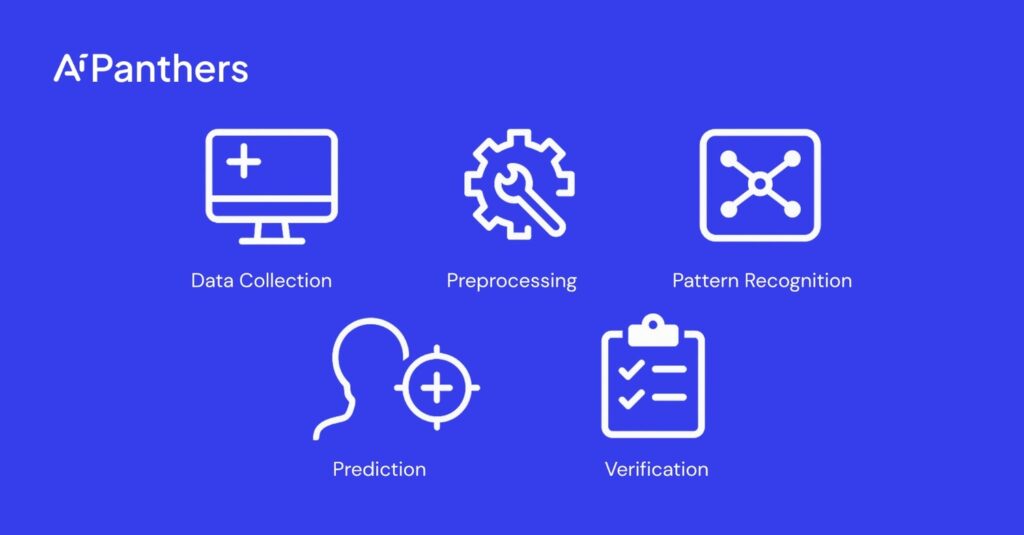
Behind every AI-powered diagnosis is a process that sounds complex but follows a simple logic.
This human-in-the-loop approach keeps doctors in control while letting AI handle the heavy lifting.
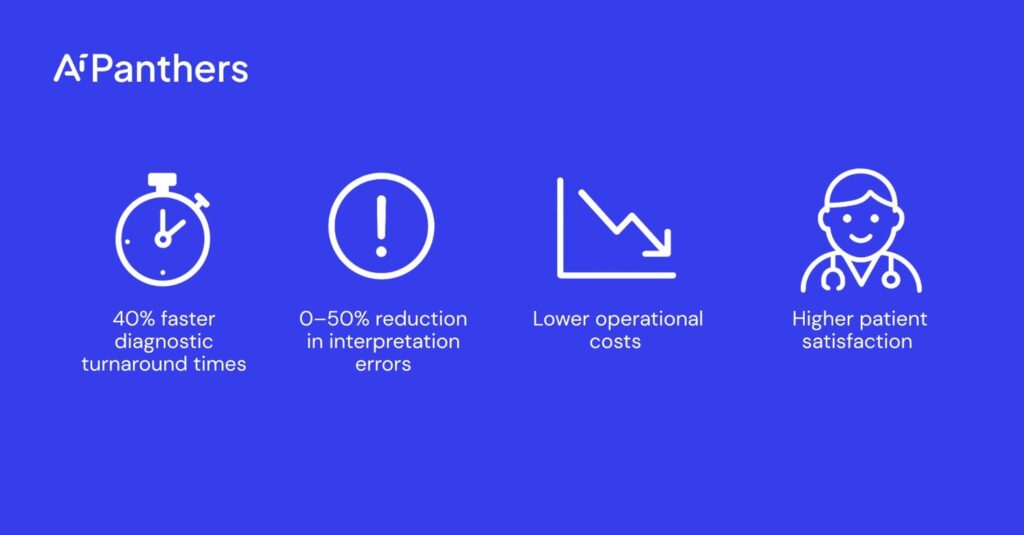
Hospitals using AI-based diagnostics are seeing measurable improvements:
Doctors who use disease-detection AI tools often report lower burnout and higher job satisfaction. With AI handling the repetitive, data-heavy work, they can focus on human care again — talking to patients, explaining results, and planning treatment.
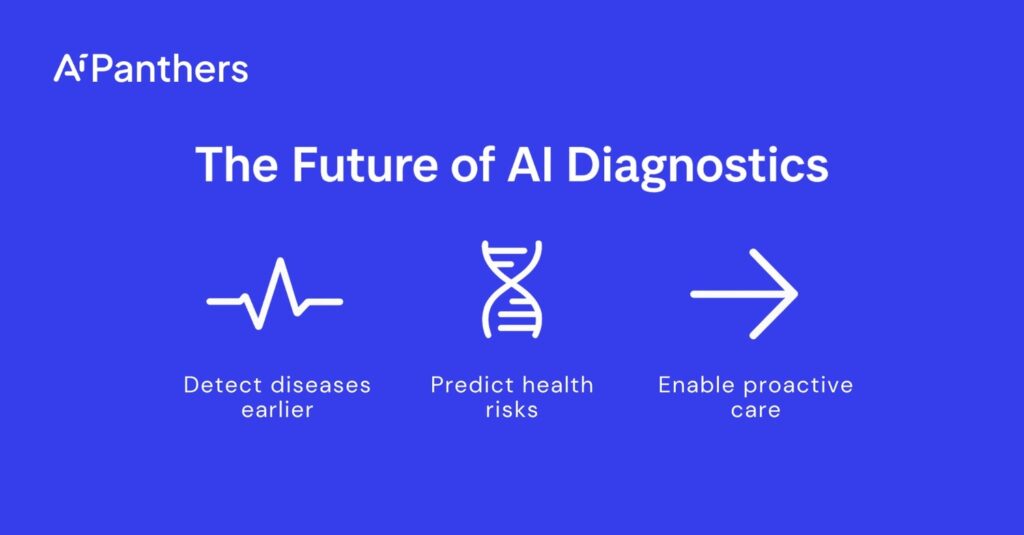
We’re moving from reactive to predictive medicine — where AI not only detects disease but anticipates it.
Imagine your smartwatch detecting subtle changes in your heart rate before symptoms appear. Or AI algorithms are analyzing your genetic data to predict which conditions you’re at risk for.
That’s the next frontier: proactive healthcare. And it’s arriving faster than most people think.
At AI Panthers, we’re helping healthcare providers build the tools that make this future possible — from AI-driven medical imaging platforms to fully automated diagnostic systems that integrate seamlessly into hospital workflows.
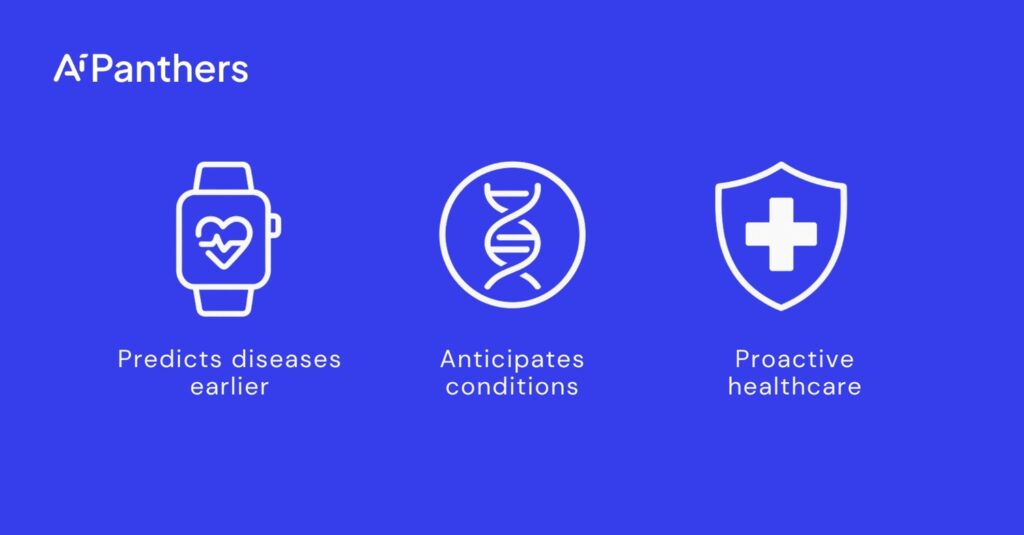
We specialize in developing AI diagnostics for healthcare that combine cutting-edge technology with real clinical understanding.
Here’s what sets us apart:
Our goal isn’t just to create AI systems. It’s to make healthcare smarter, faster, and more human.
The question isn’t whether AI will play a role in diagnostics — it already does. The real question is how healthcare organizations will use it to empower their teams and enhance patient outcomes.
When doctors and AI systems work together, we get the best of both worlds: the intuition of humans and the precision of machines.
That’s the future AI Panthers is building — one where technology amplifies empathy, not replaces it.